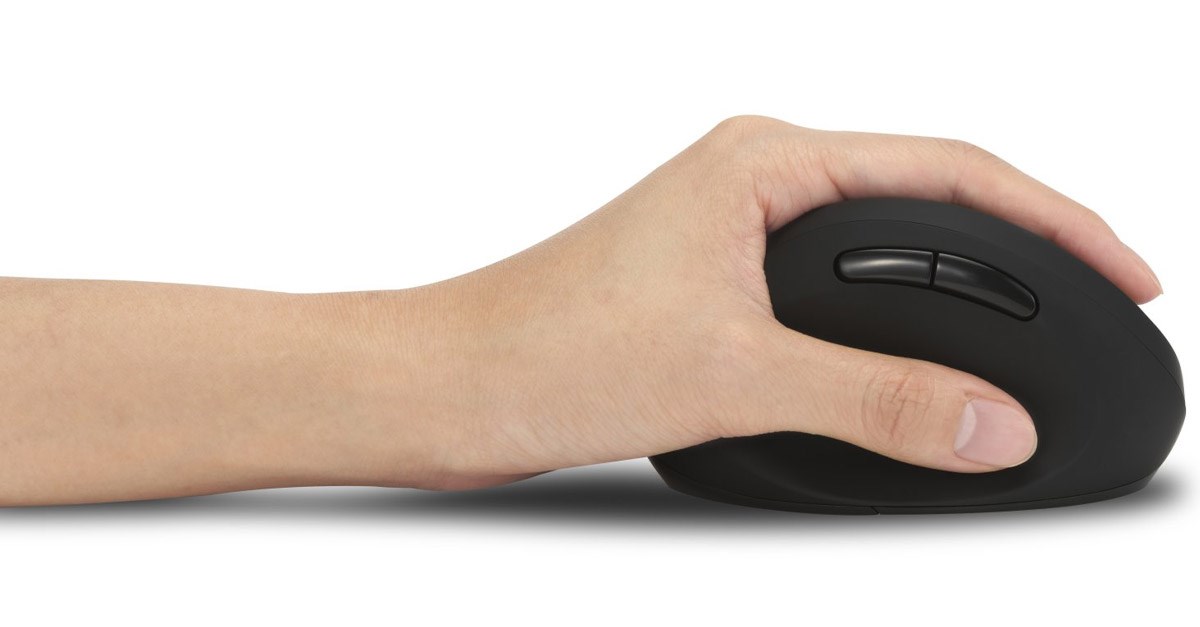
4 reasons why you should consider using a left-handed mouse (even if you’re right-handed):
- Mitigates MSDs and RSIs
- Frees Your Right Hand to Do Other Tasks
- Coworkers Will Avoid Using Your Devices
- Expands Your Skill Set
There are several studies that suggest that switching to a left-handed mouse even when you’re right-handed could benefit you in a number of ways.
So, let’s see why you should consider using a left-handed mouse, even if you’re right-handed and how you can accomplish it.
Why Consider Using a Left-Handed Mouse?
Using a left-handed mouse can reduce fatigue and muscular strain in your hand and fingers, especially if you're right-handed.
If you've ever had any issues with your wrist or hand from overusing it because of the computer, then you'll want to keep reading why switching to a left-handed mouse might be the best option for you:
1. Mitigates MSDs and RSIs
Musculoskeletal Disorders (MSDs) and Repetitive Strain Injuries (RSIs) happen when you perform the same actions every day, leading to pain in the muscles, tendons, and connective tissues. The way you control your input devices, especially if it’s not an ergonomic mouse, can lead to these types of injuries after years spent behind your desk.
By spreading the load around different muscles during the day, you can mitigate the effects of MSDs, RSIs, and other known strains or muscular injuries caused by office work. Swapping your mouse hand will reduce pain, fatigue, tingling, and numbness in your dominant hand.
2. Frees Your Right Hand to Do Other Tasks
When you’re talking on your phone and have to take notes, you swap your phone to the other hand without any problem. The same applies to your mouse. Once you’ve made the switch, you’ll be able to write with your dominant hand while still navigating around with your left and checking vital information on your computer.
“Mousing” more productively will help you get through tasks efficiently and free up your other hand to do things for which you can’t swap hands. You’ll also discover new real estate on the right side of your workstation, allowing you to keep a notepad and pen handy without needing to shift your equipment around.
3. Coworkers Will Avoid Using Your Devices
Coworkers often take liberties and quickly “borrow” your devices for their own work. If you switch to a left-handed mouse (and take the time to retrain your hand to use it effectively), chances are your coworkers won’t even try to use your device.
Even for the colleagues who try, they’ll soon find it difficult and cumbersome to use your left-handed mouse. By making the switch, you can ensure only you can use your mouse unless you share an office with an unusual amount of lefties.
4. Expands Your Skill Set
According to Kensington’s resident ergonomic expert, switching isn’t that hard to achieve, and it provides additional benefits for the future. However, there are some considerations to help you along the way.
“If considering switching to a left-handed mouse, try to do it gradually as you can have two pointer devices connected to your computer for use at a time. By starting (to learn) the skill slowly, you’ll avoid the frustration of it feeling foreign and most likely end up liking it in the end”.
Once you have mastered the skill, you may find yourself trying other things with your left hand, like stirring your coffee or operating your phone. It may just change the way you look at everyday tasks in the future.
Bonus Benefits of a Left-Handed Vertical Mouse
Switching to your left hand may spread the load on your joints when using your mouse, but a vertical left-handed mouse brings additional benefits. You can reduce the strain and pressure off your carpal tunnel by maintaining a neutral position when operating your input device.
You’ll also find it helps with managing your alignment to your workstation, forcing you into a neutral position even if your second monitor is still on the right side of your computer. Your keyboard and primary screen will no longer need to shift slightly to the left as it does when using your mouse with your right hand.
Boosts Your Cognitive Abilities
Training your brain to be ambidextrous will provide additional benefits and improve your cognitive abilities. You’ll discover many other tasks take time when you use only your dominant hand, creating new possibilities for how you go through your daily routines.
Research shows that while it may not change your neurology or make you smarter, it will change the way you look at everyday tasks. Practicing to use your non-dominant hand for tasks usually reserved for that side will make you more productive, although you’ll need to train for different activities over time to become proficient.
Use Customization to Make the Transition
Using a different hand doesn’t mean also retraining your fingers. You can use software like KensingtonWorks™ to reassign your mouse buttons according to your personal needs. Once you have the navigation and control down, you can change your button assignments on your left-handed mouse to maximize your productivity.
KensingtonWorks allows you to modify your mouse and assign shortcuts and specific key combinations to a button. You can use these features to carry out standard tasks that you regularly perform during your daily workflows.
Developing Your Left-Hand Mouse Skills with Kensington
At Kensington, we develop solutions that ensure you can be more productive behind your desk.
By taking the time to retrain your motor skills for controlling your PC with a vertical, left-handed mouse, you will be operating your workstation with both hands in no time.
See a list of devices that can help you switch your mouse to the left of your computer